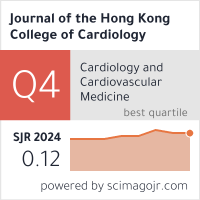Abstract
Epidemiological data from the Framingham Heart Study indicate that the cumulative incidence of Atrial Fibrillation (AF) over a 22 year follow up was 2.1% in men and 1.7% in women.1 The prevalence of AF increases with age, doubling with each successive decade, and 70% of people with AF are between 65 and 85 years old. Furthermore, even after adjusting for age and other risk factors, recent data suggest that the prevalence of AF is increasing. AF is associated with a 3- to 5-fold increased risk of stroke, a 3-fold increased risk of congestive heart failure and a significant 1.5- to 1.9-fold mortality risk after adjusting for underlying cardiovascular conditions. It is not surprising that pacing therapy which deals mainly with an elderly population is involved with the management of concomitant AF in a significant proportion of patients. Pacing therapy has naturally been extended to the population with AF alone.
Recommended Citation
Chu-Pak Lau, Kathy Lai-Fun Lee, Katherine Fan, Hon-Wah Chan, Atrial Fibrillation: Prevention and Termination with Pacing Journal of the Hong Kong College of Cardiology 2003;11(3) https://doi.org/10.55503/2790-6744.1156
Creative Commons License

This work is licensed under a Creative Commons Attribution-Noncommercial-No Derivative Works 4.0 License.



